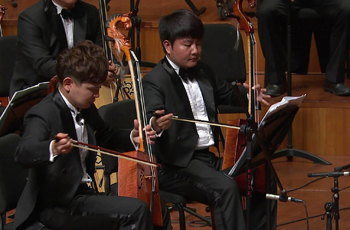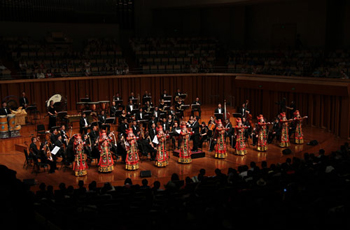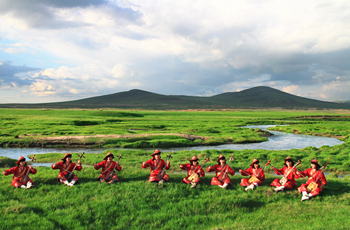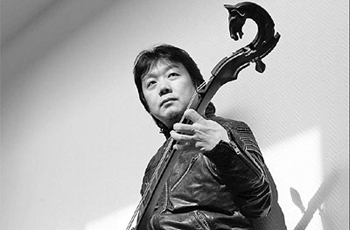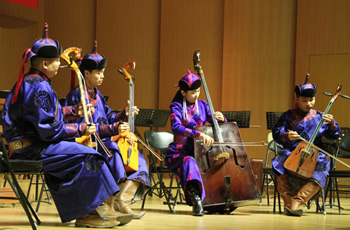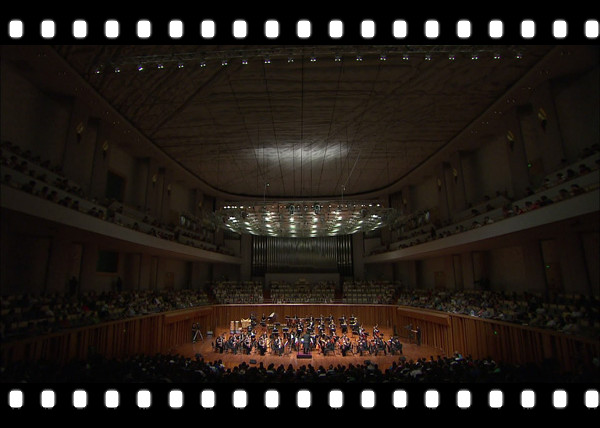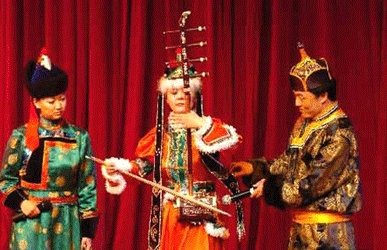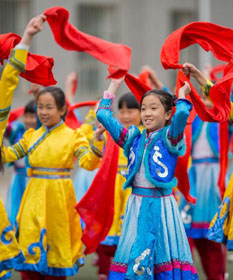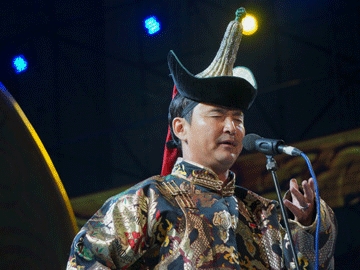Matouqin music plays on
Editor's note: The matouqin, or horse-head fiddle, is a Mongolian instrument. It is called the horse-head fiddle because the top of the pole is carved into the shape of a horse head.The matouqin is a significant piece of Inner Mongolian culture. |
| Matouqin Music Plays On |
Matouqin takes the lead in an orchestra with a difference Few people knew about Uxin, the small banner in the Inner Mongolia autonomous region, before the matouqin symphony orchestra was created in May 2013. It was the country's first symphony orchestra featuring an instrument from an ethnic group.
The matouqin or horse-head fiddle, a traditional Mongolian instrument was so impressive at a concert performed by a symphony orchestra from Ordos' Uxin Banner, said Yuan Hui, a China Daily journalist working in the Inner Mongolia autonomous region.
According to legend, a lord killed a white horse with an arrow. The horse's owner, Suhe, was filled with sorrow and missed his pet day and night. One night the dead horse came to him in a dream, and said, "Make an instrument with my body. Then I can accompany you forever and you will not feel lonely." So the matouqin was made, using the horse's bone as its neck, horsehair for strings, hide to cover the wooden soundbox , and its scroll carved into the shape of a horse's head.
Zhang Quansheng, who spent his childhood living on the grasslands of Inner Mongolia autonomous region, loves Mongolian culture and has tried to bring matouqin, or the Mongolian horse-headed fiddle to world notice.
Concerts present world intangible cultural heritages to audience "This concert is a work of ideas. It not only features distinguished traditional Mongolian cultures, but also transforms cultural heritages into education sources," according to a lecturer from the China Conservatory.
|
Follow the melody of Matouqin |
| Music and Dance in Inner Mongolia |
Sihu music The sihu, a bowed instrument, is so named because of its four strings and it is commonly found in Inner Mongolia as well as in northern China under different names, such as the siguzi, or the sixian (both refer to four strings). The sihu was invented by the nomadic Donghu people in northern China during the Warring States period(475-221 BC). After the Yuan Dynasty(1271-1368), the art of sihu spread and had a far-reaching impact on Han folk singing. Tongliao City (the hinterland of the Horqin Grassland) is now the best place to find sihu. [More] | |
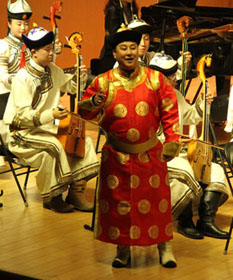 Mongolian long tune Mongolian long tune Urtin Duu or the 'Long Tune' is a historical Mongolian folk music song dating back to the 7th century AD when the Mongolians were shifting from a hunting life along the Argun River to a nomadic life on the western Mongolia Grasslands. It is now an Oral and Intangible Heritage of Humanity. Generally, Mongolian folk music is separated into two genres: the Short Tune and the Long Tune. The Short Tune, preceding the Long Tune, has a relatively short structure, narrative lyrics, and dancing. While the shift in the Mongolian lifestyle gradually took place during the 7th to 17th century A.D., a shift to a new genre of folk music with glissandos and trills also took place. This was the Long Tune, the skill of which is somewhat similar to the one used in coloratu. [More] | Andai dance
The Andai is also called the "jumping white hawk". The Andai dance originated from the collective dance of the Kulun Qi in the south of the Horqin Grassland. At first, it was a religious dance used for praying to the gods and curing sicknesses. People would perform this dance to ask for blessings from the gods, to prevent disease, and to keep away bad luck. Over time, the dance gradually became a form of entertainment. Traditionally, participants stand in a circle, singing and dancing with silk scarves in their hands. The lead dancer stamps on the ground or slowly moves sideways while swinging silk scarves. Although easy to perform, the Andai dance contains deep social significance.[More] |
| |
Hoomii For one person to simultaneously make two sounds up to six octaves in difference simulating the sounds of pouring waterfalls, winds on the grassland, and the cries of animals would seem an incredible feat. But Mongolians have such a way of singing, called 'Hoomii' or throat-singing. The method of singing Hoomii, in Mongolian, is called 'chor'. Interestingly, 'chorus' in English, 'chord' in French, and 'chor' in German, all refer to the same thing: multi-part singing. The Mongolian 'chor' is multi-part singing sung by just one person. Hoomii, in Mongolian, means larynx. With more than 800 years of history and three different genres -- the overtone, the quaver, and the complex -- the Hoomii is surely more than an outstanding vocal mimicry. The basic structure of Hoomii is consists of a continuous bass and a musical treble. Singing the Hoomii, one needs to use the vocal cords, the nasal and oral cavities, and even the thorax to vibrate the current of air to flow between the three. Sometimes, a Hoomii singer can even create consonances without using the vocal cords. It is said that Hoomii is not to be sung with larynx, but with air currents.[More] | |

